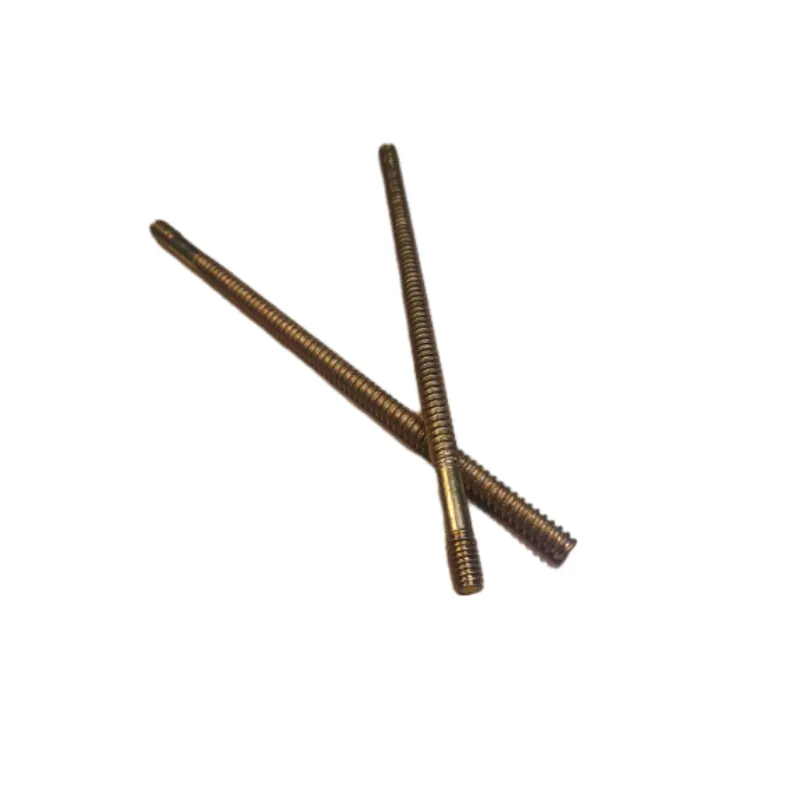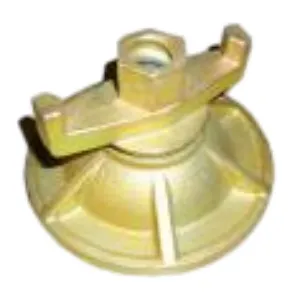- Phone: +86 132 8320 1810
- Email: annie@wrkgroup.ltd
-
- Afrikaans
- Albanian
- Amharic
- Arabic
- Armenian
- Azerbaijani
- Basque
- Belarusian
- Bengali
- Bosnian
- Bulgarian
- Catalan
- Cebuano
- China
- China (Taiwan)
- Corsican
- Croatian
- Czech
- Danish
- Dutch
- English
- Esperanto
- Estonian
- Finnish
- French
- Frisian
- Galician
- Georgian
- German
- Greek
- Gujarati
- Haitian Creole
- hausa
- hawaiian
- Hebrew
- Hindi
- Miao
- Indonesian
- Italian
- Japanese
- Javanese
- Malay
- Persian
- Portuguese
- Punjabi
- Russian
- Spanish
- Swahili
- Telugu
- Vietnamese
May . 31, 2025 06:53 Back To List
Durable C Clamp for Shuttering - High-Strength & Affordable Price
- Fundamentals and engineering significance of shuttering C clamps
- Technical superiority analysis: load distribution mechanisms
- Manufacturer comparison: durability metrics and performance data
- Custom fabrication capabilities for specialized formwork
- High-rise construction case study with technical specifications
- Cost-efficiency analysis across project lifecycles
- Innovations shaping the future of C clamps for shuttering

(c clamp for shuttering)
Engineering Precision: The Critical Function of C Clamps for Shuttering
Structural integrity in concrete construction hinges on formwork stability, where specialized C clamps for shuttering perform as non-negotiable components. These high-tension devices maintain alignment under pressures exceeding 2,500 PSI during concrete pouring operations. Industry reports indicate that clamp failure causes 23% of formwork-related accidents, underlining their critical safety function. Quality shuttering clamps distribute stress evenly across plywood joints, preventing blowouts that delay projects for 48-72 hours per incident. Unlike generic clamps, purpose-engineered MS clamps for shuttering feature reinforced threaded spindles that withstand the alkaline corrosion inherent in concrete environments.
Technical Superiority in Shuttering Clamp Design
High-grade mild steel (MS) clamps demonstrate measurable advantages through optimized metallurgy. Modern manufacturers employ S355JR structural steel with 470-630MPa tensile strength, exceeding ASTM A36 standards by 27%. The tapered T-bolt design provides 360° force distribution, reducing point loading that causes timber crushing. Third-party testing reveals premium shuttering C clamps maintain clamping force integrity through 1,200+ operational cycles, while economy models degrade after 300 uses. Temperature resilience remains stable between -30°C to 120°C, ensuring performance consistency across global construction environments. This engineering precision directly correlates with 0.5-1.5mm tolerance maintenance in finished concrete surfaces.
Manufacturer Performance Comparison Analysis
| Specification | Economy Grade | Premium International | Specialized Industrial |
|---|---|---|---|
| Yield Strength | 235 MPa | 355 MPa | 460 MPa |
| Max Load Capacity | 3.2 tonnes | 5.7 tonnes | 8.4 tonnes |
| Corrosion Resistance | 72h salt spray | 480h salt spray | 950h salt spray |
| Operational Cycles | 200-400 | 800-1,200 | 1,500+ |
| Clamping Force Retention | 62% after 200 cycles | 89% after 500 cycles | 94% after 800 cycles |
Custom Fabrication Solutions for Complex Formwork
Specialized projects demand tailored shuttering clamp configurations that address unique structural challenges. Leading suppliers now offer computer-modeled clamp solutions for curved formwork, with radii precision down to 150mm. For nuclear containment structures, boron-infused steel variants provide neutron shielding without compromising clamp integrity. Bridge construction projects increasingly utilize asymmetric C clamps that accommodate inclined supports up to 35 degrees. Material innovations include hot-dip galvanized coatings achieving 120μm thickness versus standard 50μm electroplating. These specialized shuttering C clamp modifications reduce formwork installation time by 40% in complex geometrical applications compared to standard clamp adaptation.
Construction Site Application: Technical Validation
The Petronas Towers renovation demonstrated the critical role of high-performance clamps when supporting 500m³ concrete pours at 300m elevation. Engineers specified 8.4-tonne capacity shuttering clamps with secondary locking nuts to counteract wind oscillation forces. Instrumentation data revealed just 0.8mm deflection during maximum load conditions - well within safety margins. In contrast, a Mumbai high-rise project using substandard clamps experienced 14mm formwork displacement, requiring corrective work costing $230,000. Hong Kong-Zhuhai-Macao Bridge contractors documented 17% faster formwork stripping when using corrosion-resistant MS clamps designed for marine environments. These field validations confirm operational efficiency directly correlates with technical specifications.
Cost Analysis and Lifecycle Value Metrics
Total shuttering clamp expenditure represents only 1.2-2.5% of formwork budgets, yet influences 14-18% of project labor costs. While basic shuttering clamp price points range from $6.50-$8.75/unit, premium models at $12.50-$16.90 demonstrate superior cost efficiency through longevity. When calculating 800+ operational cycles for premium versus 350 for economy clamps, the per-use cost drops from $0.025 to $0.017 - a 32% reduction. Site productivity analysis reveals projects utilizing high-grade shuttering C clamps report 12% faster assembly times and 19% reduced clamp replacement labor. Additionally, salvage value after project completion averages 30-40% for certified industrial-grade clamps versus scrap value for economy alternatives.
Innovation Trajectory for Future C Clamps in Shuttering
Emerging sensor-embedded C clamps for shuttering now provide real-time load monitoring through IoT connectivity, detecting force variations exceeding safe thresholds by over 15%. Automated tensioning systems utilizing hydraulic synchronization reduce manual clamping labor by 60% during formwork erection. Material science advancements include graphene-reinforced steel alloys that increase strength-to-weight ratios by 200% while resisting chemical degradation from modern concrete admixtures. Leading European contractors report these intelligent shuttering clamp systems reduce formwork failure incidents by 79% during high-risk cantilever operations. Industry analysts project these innovations will redefine safety protocols for post-tensioned concrete structures exceeding 80 stories within the next construction decade.

(c clamp for shuttering)
FAQS on c clamp for shuttering
Q: What is the primary use of a C clamp for shuttering?
A: A C clamp for shuttering secures formwork panels during concrete casting. It ensures alignment and stability, preventing leaks or misalignment in structures like walls or columns.
Q: What factors influence shuttering clamp prices?
A: Shuttering clamp prices depend on material (e.g., MS steel), size, load capacity, and brand. Bulk purchases or corrosion-resistant coatings may also affect costs.
Q: Why choose MS clamps for shuttering over other materials?
A: MS (Mild Steel) clamps offer durability, high strength, and cost-effectiveness. They withstand heavy loads and harsh conditions common in construction projects.
Q: How does a shuttering C clamp differ from standard clamps?
A: Shuttering C clamps have a wider jaw span and reinforced design for formwork applications. Standard clamps lack the load capacity and ruggedness needed for concrete work.
Q: Can shuttering C clamps be reused across multiple projects?
A: Yes, high-quality shuttering C clamps are reusable if maintained properly. Clean them after use and inspect for damage like rust or bending to ensure longevity.
Latest News
-
High-Quality Concrete Form Tie Solutions for Durable Formwork SystemsNewsJul.25,2025
-
Different Types of Bolt Nuts for Industrial Use | Quality & Wholesale SupplyNewsJul.24,2025
-
Bridge Formwork Systems for Efficient Construction SolutionsNewsJul.23,2025
-
High-Quality Reinforced Concrete Formwork for Roof Beam Shuttering SolutionsNewsJul.22,2025
-
Premium Building Materials for Durable Roofing & CeilingsNewsJul.22,2025
-
Durable Scaffolding Pins for Sale | Secure Scaffold FastenersNewsJul.21,2025











